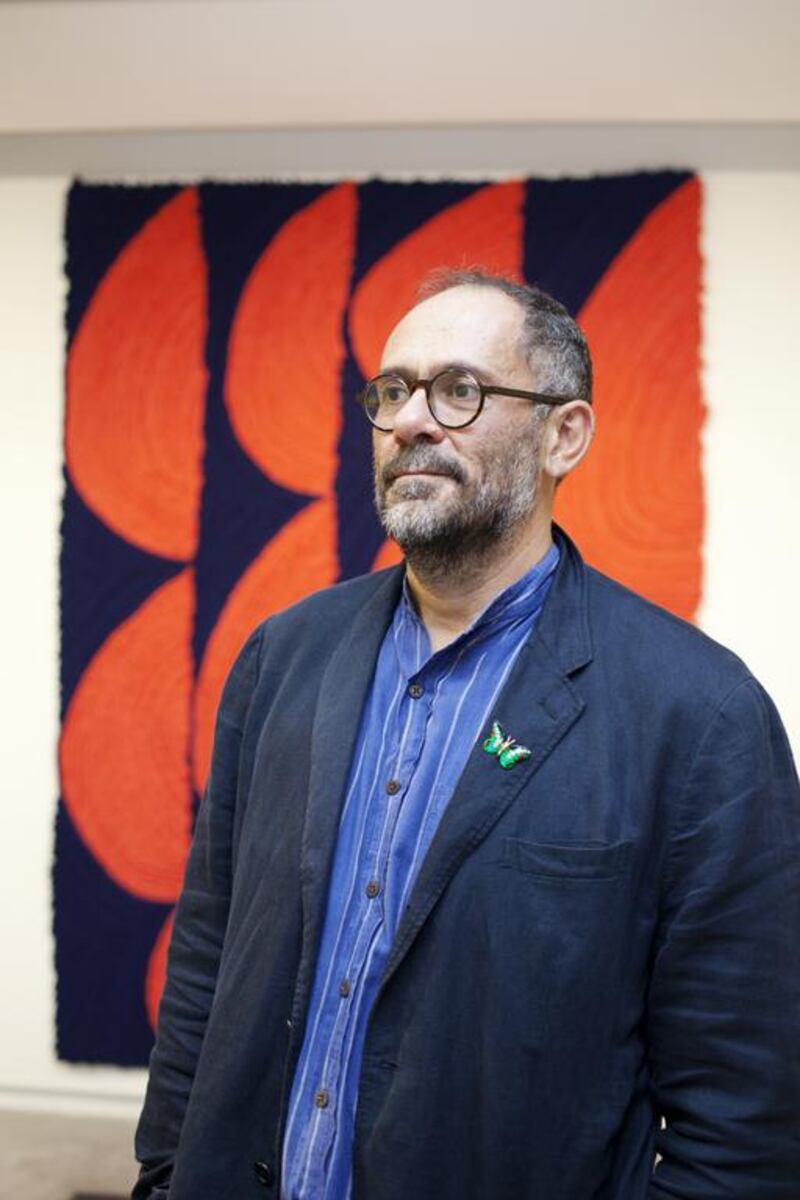If, upon first impression, Enrico David’s work leaves the viewer feeling uncertain, then the artist has achieved part of his goal.
The Turner Prize nominee – whose first solo show in the Middle East, Fault Work, is now running at Sharjah Art Foundation – creates strange, anthropomorphic forms in a variety of mediums.
In this exhibition, the works are mostly sculptures that are difficult to describe – and for which he offers no clear explanation.
“Art is the one place where you can retain a sense of unclarity and indirectness about meaning, so you can explore your relationship to not understanding,” he says on the first day of the show.
“When you are not being too descriptive or didactic about what you want the viewer to feel, there is an opportunity for potential and discovery.”
This open-ended invitation might seem unsettling, but once embraced it offers an interesting entry point through which to experience the art. The works are collected in a single room within SAF’s Art Spaces and, according to the artist, create a useful “set of brackets” within which many elements of his practice are contained.
The selection was made by Sheikha Hoor Al Qasimi, the founder of SAF and curator of the show. David tutored her at London’s Slade School of Fine Art and she has long admired his work.
The oldest works in the show are the wall hangings – tapestries made of hand-rolled wool – that take their design from “spontaneous and impulsive” drawings.
The majority of the other pieces are sculptures, which are peculiar but still enticing. The Assumption of Weee, from 2014 is a piece that depicts several figures (or is it one?) fused together at the feet and connected in concertina fashion traversing from a horizontal to a vertical position.
“My works allude to the mystery of human relationships,” David ponders as we stand in front of the piece. “To accept that mystery and to live with it is an idea we tend to discard because it is complex and problematic. Also, when we cannot explain things, we feel disempowered and out of control and in that sense, there is an element of abandonment in my work. I make them very descriptive and specific but about what, I’m not sure.”
The relationship David has with his own work is intriguing. He talks about the artworks almost as if they have a mind of their own, giving authority to the shapes and forms, explaining that sometimes, after he has made a sculpture, painting or tapestry, the motif itself morphs into another piece of art, almost without his intervention.
"This sculpture for instance," he says pointing at a piece called Drainage, that is made from bone and a plaster-like substance called jesomite, "was once a painting and then found its way to becoming an object. Of course, it is a complicated process with several alterations but there is not usually a final destination for any of my pieces".
Born in Ancona in Italy, but having lived in London for more than half his life, David’s relationship to language is also a crucial one. Enviably eloquent even for a native English speaker, David has followed what he describes as a “hazardous path” to reach his current level of articulacy.
“Through my learning process, I realised that all languages have rules, liberties and licenses and I began to observe the assimilation process. As I looked at language from a different perspective, I found the of potential of language as well as the artistic process a possibility for expression.”
Language as a set of tools and a code for understanding underlines most of David's practice and is perhaps most obvious in the two sculptures set aside on a small white shelf. One piece called Life Sentences shows, an insect-like figure with a female head and many limbs. Each set of limbs bends round to hold onto the set in front and so, the figure is holding onto itself in an elevated pose. The sculpture is reading an essay written for the catalogue of the show she first appeared in and so, is learning about herself. The second sculpture is made of a cast of a hollowed out bone with a metal blade dissecting the body and its pointed end coming to rest across the mouth. The pieces are a reflection on the process of understanding. "Both of them have to do with the dilemma and limitations of language," David says.
However, these sculptures, as with all of the other pieces in the exhibition are equally as enjoyable if viewed as simply odd and charming objects, with a whimsical sense of fun.
“It is important to remember that my work, in its utter complexity, is still ultimately very simple. It is as simple or as complex as we are and I encourage anyone to come and try to work any way of interpretation for their own exploration and enjoyment.”
• Fault Work runs until January 9 in Building F, SAF Art Spaces. For details visit www.sharjahart.org.
aseaman@thenational.ae





